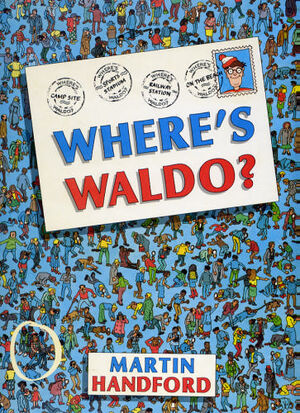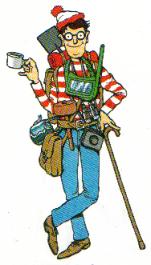
If you thought some of these other delightful 90's commodities were franchising machines, you've yet to meet the monster of all monopolies. That's right, I used "monster" as a shockingly low-grade horror book pun. Just deal with it.
Children growing up in the 90s had a fascination with all things spooky. Shows like Are you Afraid of the Dark? and all sorts of novelized ghost stories cast a spell over young consumers and instilled in them an unquenchable hunger for all varieties of horror media. The king cresting this horror wave was R.L. Stine, a virtual book-miller churning out book after book laced with a satisfying mix of satire, humor, ripped-off story lines, suprise endings, and fright.
R.L. Stine wrote innumerable pieces of young adult fiction, but most memorable and exhaustive were those in his Goosebumps series. In an age where book series dominated the youth literature marketplace, Stine was among the few series creators who actually authored all of his own books without the use of ghostwriters. I guess you could call R.L. Stine the leading ghostwriter. Okay, even I can't handle that one. Moving on.
Goosebumps books were a gratifying balance of things of that our parents did and did not approve. On one hand, we were reading chapter books and unquestionably though unintentionally gaining some sort of literary adroitness. On the other, we were scaring ourselves silly with undiluted, unwholesome trash that was prime fodder to give us bad dreams and night terrors. It was like tricking your parents into thinking you were learning something, while deep down you knew you were up to no good.
R.L. Stine openly acknowledged that many of his Goosebumps plot lines were lifted from old-school horror exploits such as the Twilight Zone. Thankfully, as children in the mid-90s had limited or no knowledge of the existence of 1960s sci-fi television series , they eagerly absorbed
these plot lines as fresh and new. Regardless of the story origins, the books were fairly un-put-downable. Stine was the master of plot twists, particularly at the end of a story. Even once we had read enough books in the series to recognize when we were being tricked or misled, we always took the bait and were outraged to find all of our supposedly sacrosanct suppositions had been for naught.
The best (and let's be honest, worst) example of this is Goosebumps #26: My Hairiest Adventure:

While of course the major underlying premise of these books are their absurdity, this one ostensibly reigns supreme and unleashes some fairly ridiculous plot meandering (if you haven't read the book or simply can't yet recall, that "unleash" is another marvelous pun. Really, I swear.) In short, a group of kids find an expired bottle of self-tanner and naturally decide to engage in a group lather session. Soon thereafter, they discover that they are sprouting hair all over their bodies and (mistakenly) believe the tanning solvent is to blame.
Suddenly, he starts seeing dogs all over town sporting the same hair/fur and eye colors as his previously human companions. Not only is this a bit spooky, it certainly explains why we had to read page-long description of Lily's clear green eyes and sandy hair. To think I'd erroneously speculated that Stine had developed a crush on his charming 7th grade female character.
Long(ish) story short, our lovable and assumably human protagonists aren't really kids at all...they're (wait for it!)...dogs! Yep, dogs. The details are so ridulous I don't think I'll extrapolate any further and rather just pause that with that Stine-esque chapter-end cliffhanger and leave you to your own book-finishing devices. Suffice it to say, we were surprised, if not a little confused.
Such was the way of Goosebumps. Just when we believed we had it all figured out, Stine would throw in an alien friend or a giant blobular monster to throw us off the trail. The real beauty of these books were their window to escapism; they did not need to be grounded in reality or even make sense. We loved them unconditionally, and were even willing to accept dozens of unwarranted sequels.
Of course, like any profitable 90s franchise, books were never enough. Some of our favorite stories were adapted for TV by the now defunct Fox Kids network:
That's right, because what's more ominous in a series intro than manuscript pages flying dramatically out of an author's briefcase? We all understood that it was based on the book series, but thankfully producers chose to drive the point home with outlandish literality. Not to mention that the dog's glowing eyes look suspiciously like they were sloppily drawn in Microsoft paint. This baby's got Fox written all over it.
Despite the low-budget TV series, board games, and video game adaptations, the tried and true Goosebumps formula was in the books. While as adults we can certainly recognize the chintzy stories and plot twists, we can still appreciate our childhood worship of these books as sacred. Their adeptness at simultaneously entertaining us and scaring us out of our minds always kept us hungry for more.
So lay back, grab your tattered old copy of Night of the Living Dummy III, and take yourself back to a simpler time. A time when you were able to suspend your disbelief at the implausibility of not one, not two, but three families falling for the same dummy-comes-alive trick all over again. So long as each chapter formulaicly ends with someone letting out a bloodcurdling scream for no reason other than to set up a cliffhanger for the following chapter, all is right in the world.
Amazingly comprehensive reviews of Goosebumps books:
Blogger Beware









